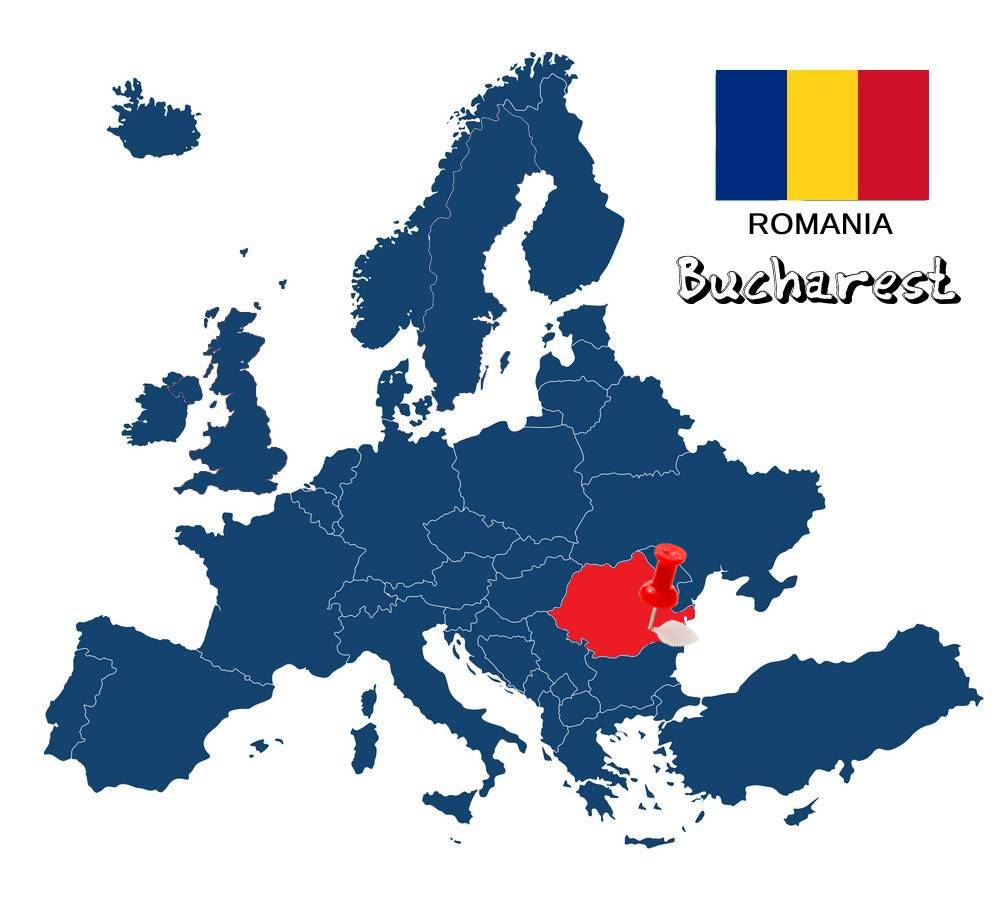
A city that stands between the old and the new. A place that tries to escape the mud and the wounds left behind by Ceausescu and redefine its identity. Bucharest is waiting for you to discover it!
A few words about the city
Bucharest is the capital and largest city of Romania. It is built on the banks of the river Dibovica, less than 70 km north of the Danube and is of course considered the cultural, commercial and industrial center of the country. The name of the city has an unclear origin, but it seems to be derived from the name of Bucur, who was a prince, outlaw, fisherman, shepherd or hunter, according to various folk legends. According to historical reports, the year of the city's foundation dates back to 1459, while it became the capital of Romania in 1862! Bucharest's long history is characterized by periods of growth and decline that were identified with periods of occupation and looting by hostile tribes, something that is also reflected in its architecture. The architecture of the city is, therefore, a mixture of neoclassical, interwar (Bauhaus and Art Deco), communist period and modern. In the period between the two World Wars, the city's elegant architecture and sophisticated elite earned it the nickname "Little Paris of the East". Although buildings and districts in the historic center of the metropolis were severely damaged or destroyed by war, earthquakes and above all by Nicolae Ceausescu's "systematization" program, many remarkable structures have survived and are a pole of attraction for thousands of visitors from all over the world. Today the population of Bucharest is estimated at 1,883,425 inhabitants within the city, while in the wider area there are 2.27 million inhabitants. So I will try to introduce you to Bucharest through my own eyes and share with you what I think someone who is visiting for the first time should see.
Palatul Parlamentului
The Palace of the Parliament (Palatul Parlamentului) or the Palace of the people, as it is popularly known, is undoubtedly the most characteristic attraction of Bucharest. It is the largest and most expensive civilian administrative building in the world and is also the heaviest building on the planet. But the “firsts” do not end here, since the Romanian Parliament is the largest building in Europe and the second largest in the world, behind the Pentagon in the USA. This controversial construction occupies 330,000 sq.m., it began to be built in the early 80s and was never completed according to the original plan, since the Nicolae Ceausescu regime collapsed! It has 3,100 rooms that currently house the services of the Parliament, the Senate and is open for visits with an organized tour. Finally, inside the palace of the people is also hosted the National Museum of Contemporary Art.
Piata Uniri-Piata Revolutiei
Leaving behind the Palace of Parliament, you will find yourself in Bucharest's largest and most impressive square, the Uniri Square (Piata Uniri). It was initially constructed during the communist era as the avenue of the victory of socialism, but was renamed after the Romanian revolution. The square is a major transport hub, comprising a metro station, a tram terminal and a major hub for STB buses. Unirea shopping center, Cocor department store and a large taxi rank are located on the east side of this square, while the well-known Hanul lui Manuc hotel is located on the north side, near the northeast corner. Finally, in the center of the square, there are some impressive fountains, which during the spring and summer months are illuminated creating an impressive scenery!
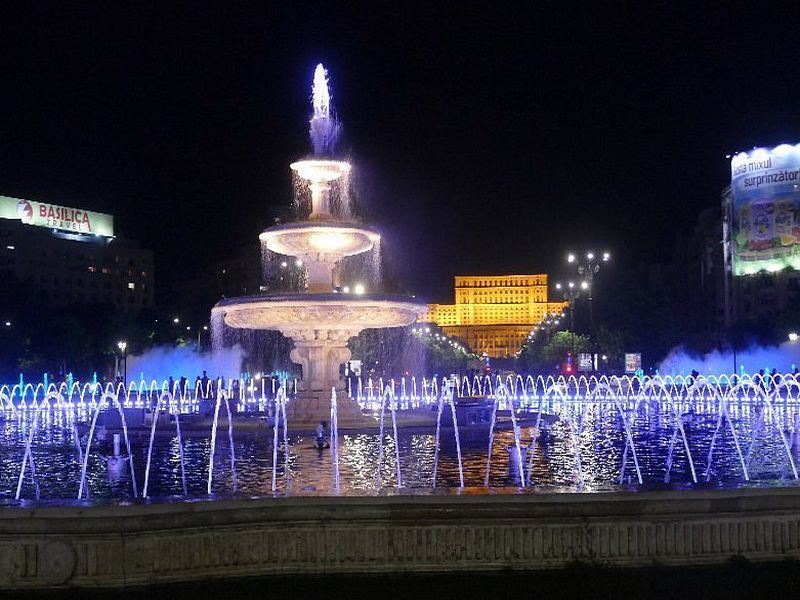
Another square in the city center that is worth visiting is the Freedom Square (Piata Revolutiei). The square is named after the scene of the last minutes of Dictator Nicolae Ceausescu's rule in Romania. On December 21, 1989, a coup was carried out with the help of more than 100,000 people, forcing the leader of the communist party to leave and change the course of the country's history. Until that date, the main square was known as the Palace square, due to its proximity to the Royal Palace, which is the current home of the National Museum of Art (Muzeul Național de Artă), which I will refer to more extensively below. Nearby you will find other historic buildings and monuments such as the Central University Library (Biblioteca Centrală Universitară Carol I), the Ministry of the Interior (Ministerul Afacerilor Interne), the Romanian Athenian (Ateneul Român), the Athenee Palace Hilton and the dramatic monument of the Renaissance (Memorialul Renașterii).
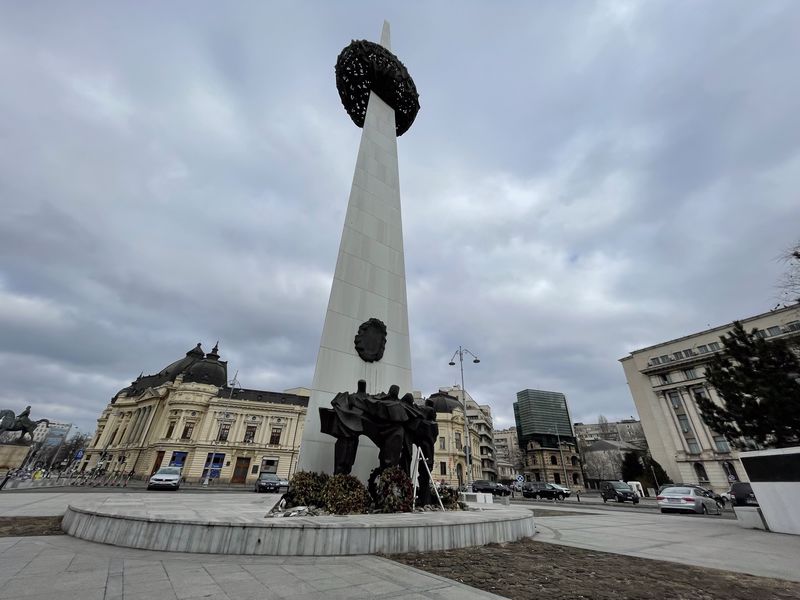
Parks
When you visit Bucharest, you will find out that it is a green city, full of parks and gardens on every corner. The first green oasis in the city centre worth visiting is Cișmigiu Gardens. It is the oldest and one of the most well-groomed parks in the urban area, located near University square, just opposite the city hall. From spring onwards you will find, among other things, a lake, a beer garden, a playground, a chess area where elderly people play tournaments and numerous benches to rest.
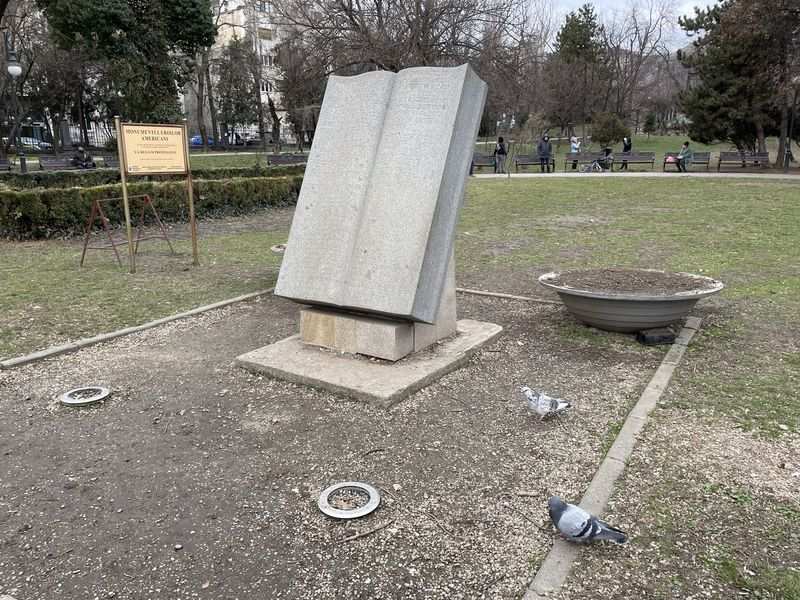
Bucharest's largest park, however, is located to the north of the city and is called Herăstrău Park. It was created in 1936 and since then it is the place where locals and tourists enjoy endless walks, boating on the lakes and its islet, picnics or coffee in one of the hangouts of the park.

The least known of the city's parks is the park of Charles I (Parcul Carol I). It is of course named after King Carol I of Romania and is a French garden located in the south-central region of Bucharest. At the entrance of the park, you will be greeted by an impressive fountain with the twelve zodiac signs (Fântâna Zodiac), while then there is a beautiful artisan pond full of ducks and at the end of the park dominates the Heroes of the Nation Monument (Mormântul Ostașului Necunoscut).
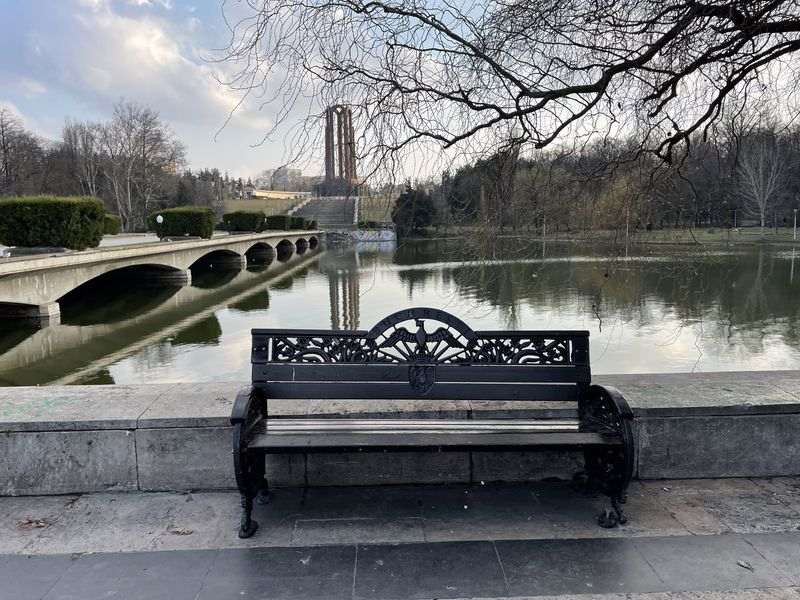
Muzeul Național al Satului "Dimitrie Gusti"
In Herăstrău Park you will find a special place that I highly recommend. I am, of course, referring to the National Village Museum "Dimitrie Gusti" (Muzeul Național al Satului "Dimitrie Gusti"), which is essentially an outdoor miniature of traditional Romanian life. In this open museum you will discover houses, churches and various other buildings, which testify to the architecture from every part of Romania. Admission costs 20 lei, that is, about 4e.
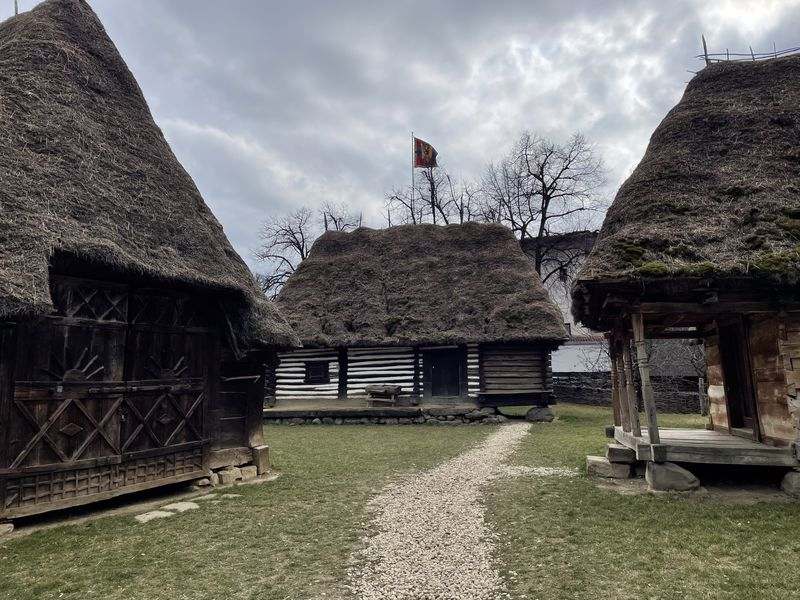
Arcul de Triumf
And just outside stands the Arch of Triumph (Arcul de Triumf), which is an exact copy of that of Paris. This is one of the most naturalized sights of Bucharest, which was originally made in a wooden version in 1878 when Romania gained its independence so that the victorious troops could parade under it. After the end of World War I and more specifically in 1922, it was replaced with a temporary structure, which was replaced again in 1935 by the building we see today. The Arcul de Triumf is 27 meters high and was designed by Petre Antonescu, while the sculptures decorating the exterior were created by famous Romanian sculptors such as Ion Jalea and Dimitrie Paciurea.
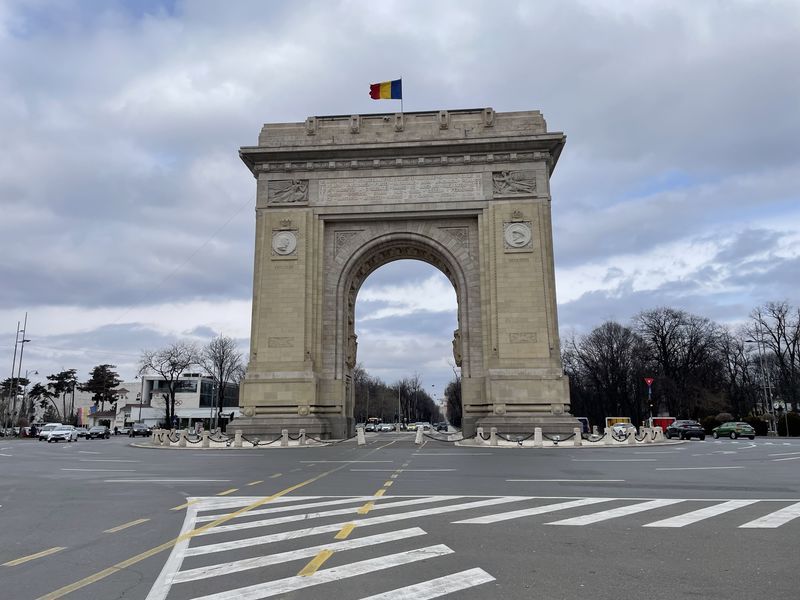
Biserica Mănăstirii Stavropoleos- Biserica Sfântul Anton
In the center of the old town, there are two temples that are definitely worth visiting. The first is the Church-Monastery of Stavropoleos (Biserica Mănăstirii Stavropoleos). This particular church was built in 1724 by the Greek monk and Archimandrite Ioannis Stratonikeas and stands out for its beauty and simplicity. Its architecture is influenced by Ottoman, Western and local Romanian elements, while the interior is impressive with wooden and stone sculptures, paintings and frescoes. Admission is free.
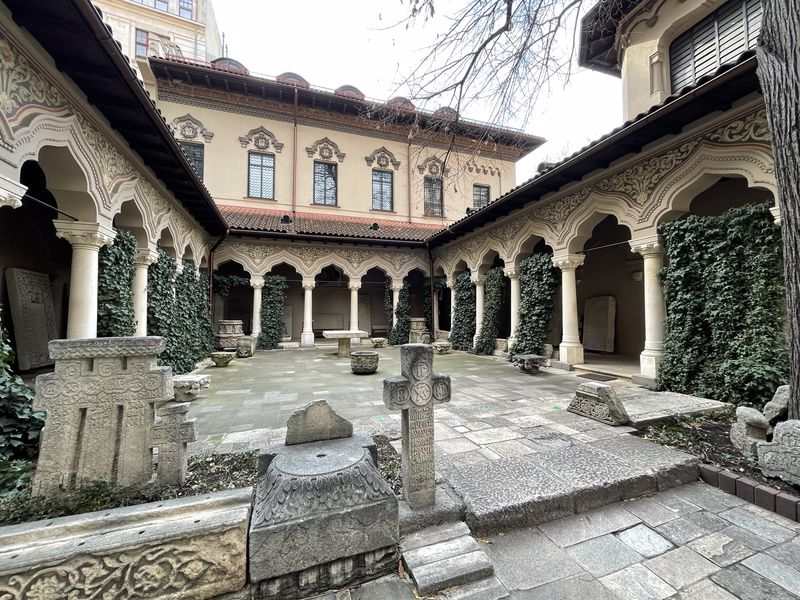
The second church that stands out in the center of Bucharest is the Church of St. Anthony (Biserica Sfântul Anton), right next to the old courtyard (Curtea Veche). This historical monument was primarily built by Voievodul Mircea Ciobanul between 1545-1559, but the original building received many modifications with the last one taking place in 1715. And in the Church of St. Anthony the entrance is free.
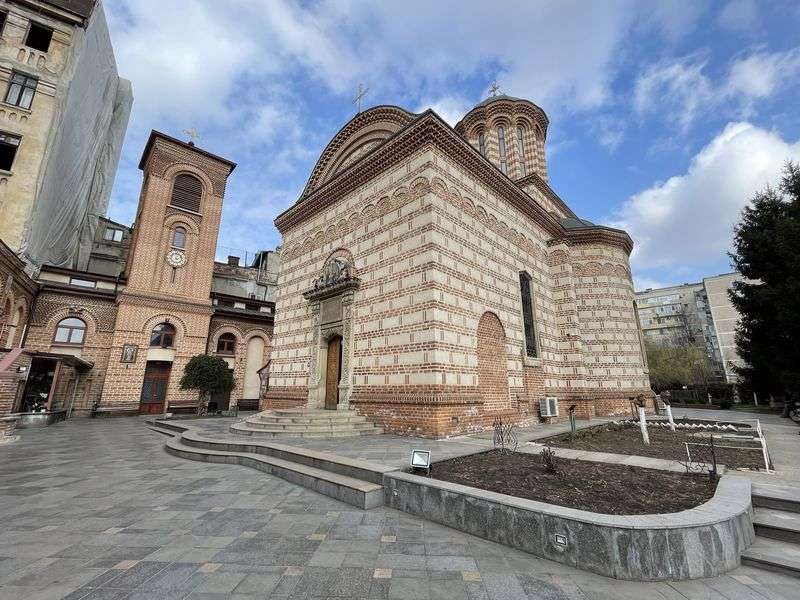
Pasajul Macca-Vilacrosse
In the heart of the old town, you will find one of the beautiful covered passages! Pasajul Macca-Vilacrosse is a fork-shaped arched road with yellow glass covering its roof. It was originally built as an inn, but when the Catalan architect Xavier Vilacrosse, married the inn owner's daughter (1843), the couple received the inn as a wedding gift, renaming it with the name of the architect. Towards the end of the 19th century, it was demolished and replaced by a two-storey, ornate structure, in the style of Western passages. Over the years it was additionally used as Romania's first Stock Exchange, and today it hosts dozens of restaurants, cafes and bars.
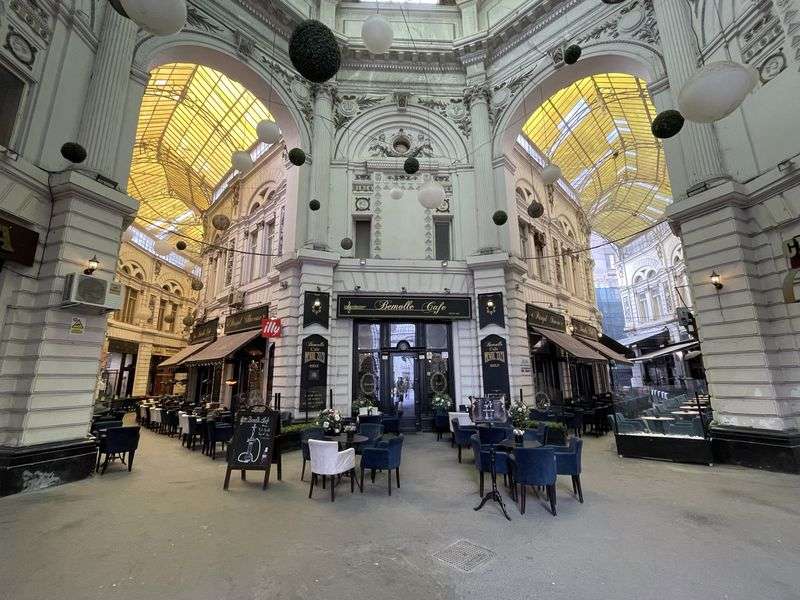
Museums
The first museum worth visiting in Bucharest is the National Museum of Art (Muzeul Național de Artă), which is housed inside the Royal Palace. It features exhibits of medieval and modern Romanian art, as well as the international collection gathered by the Romanian royal family. Admission costs 20 leu (i.e. about 4e).

Another art space worth visiting in the city is the Palace of Cantakuzino (Palatul Cantacuzino). It was erected between 1898-1900, when the wife of George Enescu, Maria Cantacuzino, suggested its construction, while today it hosts the Museum of George Enescu and exhibits manuscripts and other personal items. Admission costs 10 leu (i.e. about 2e).

Finally, do not miss a visit to the National Museum of history of Romania (Muzeul Național de Istorie a României Bucureşti) and the National Museum of Natural History Grigore Antipa (Muzeul Național de Istorie Naturală "Grigore Antipa"). The first is located within the old town and is undoubtedly one of the most charming buildings in the Romanian capital. It contains Romanian historical artifacts from prehistoric times to modern times. The National Museum of Natural History, on the other hand, was originally founded in 1834 and took its current name in 1933 from Gregory Antipas, who “ran” the museum for 51 years. The museum's collection consists of more than 2 million specimens, while it is considered as one of the most famous and well-organized Natural History museums in the world. The entrance to both museums costs from 20 leu (i.e. about 4e).
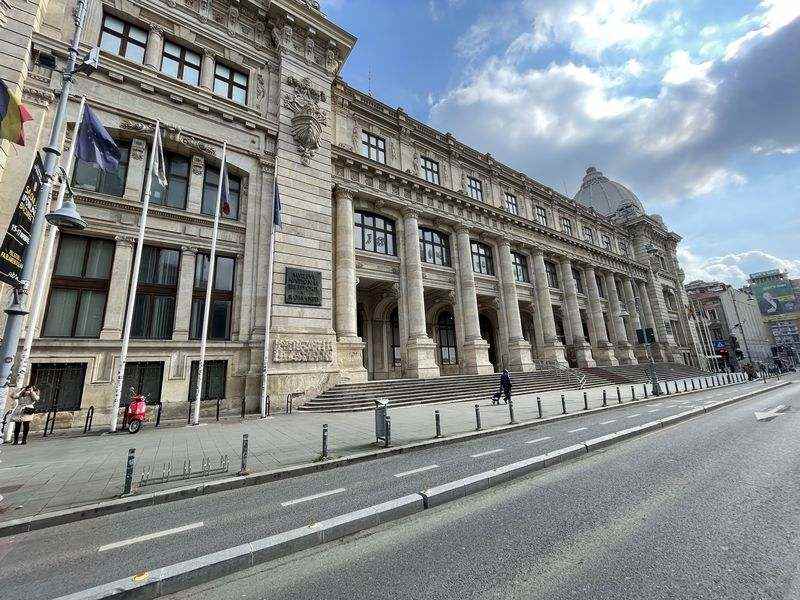
Cărturești Carusel
It is impossible to visit Bucharest and not take a walk through the most elegant bookstore in the world. The Cărturești Carusel is located in the heart of the old town and opened its gates in 2015 in a renovated 19th-century mansion. It has more than 10,000 books, 5,000 albums and DVDs and hundreds of other genres. The multi-level space, which extends on 6 levels, in addition to books, often hosts cultural events, concerts and exhibitions, while on the top floor there is a café-bistro, where you can enjoy your lunch or coffee with a book.

Therme Bucurest
Last but not least I left my favorite spot in the city, the Baths of Bucharest (Therme Bucurest). This is the largest wellness center in Europe, which is located very close to the city airport. It features a range of stunning facilities including heated indoor and outdoor pools, themed saunas, mineral pools, water slides, steam baths and infrared treatments and is considered an ideal place to relax during your stay in the city. Therme Bucurest's trademark is, of course, its enormous indoor pool, which is surrounded by tall and impressive palm trees! The entrance to this room for 3 hours costs 84 leu (i.e. about 17e), while for 4,5 hours 99 leu (i.e. about 20e). If you wish to visit and use the other facilities, you will need to pay another 20 leu (i.e. about 4e). Ultimately, in the building there is a bar and restaurant if you wish to have lunch or drink something, while you can rent swimsuits, towels, slippers and anything else you need.
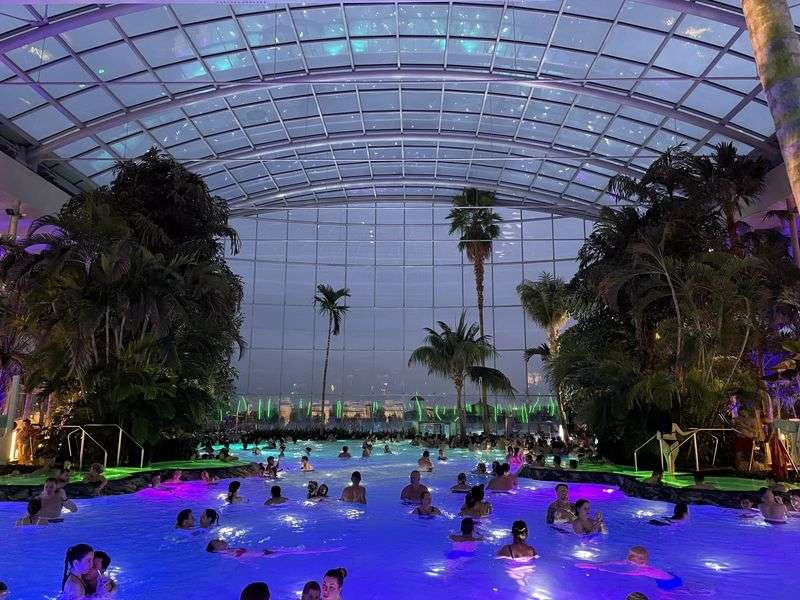
How to go
Thessaloniki is connected by air to Bucharest and Henry Coanda International Airport, via several airlines. The best choice comes from Ryanair, where with proper planning one can find tickets starting from 15€ round trip! You can also fly with the local TAROM from 175€ round trip.
Where to stay
Bucharest is a large city, which has a wealth of options in the field of accommodation. I would suggest choosing the old town part, which is the most beautiful and most convenient, as you will be close to everything! So my suggestion is the Grand Central Accommodation-Doamnei, located in the heart of the old town and a breath away from the starting point of all excursions. It is a fully renovated apartment, which offers all modern amenities.
How to move
Bucharest's public transport system is, of course, the largest in Romania, but also one of the largest in Europe. It consists of three lines of metro, tram and buses, which cover all the lengths and breadths of the city. Plus, taxis are relatively economical, while all applications such as Uber, Bolt and others work normally.
What to eat
Romanian cuisine is a mixture of different cuisines, but has its own special character. It is the result of a crossroad of cultures and reflects the history of the country, which over the years has been under Greek, Roman, Turkish and Austro-Hungarian yoke, while other countries such as France, Italy, Poland and Russia have also had an influence on its language and culture. It has also been influenced by the cuisines of neighboring peoples, such as Bulgaria, Germany, Serbia and Hungary. Some of the most traditional dishes of the region are Mamaliga, which is a porridge of yellow corn flour, Mititei (spicy sausages), Sarmale (cabbage rolls), all kinds of soup, usually served in bread, pork shank, pickles and sweets Papanași, which is the Romanian donut and Mucenici, which is something like buns. To get a solid dose of Romanian cuisine and culture, I suggest visiting the city's most historic and popular restaurant, Caru' cu bere. This restaurant is usually full all day, so you should make a reservation. Very special is also the medieval character Excalibur, while for awesome views in combination with delicious food I recommend Linea Closer to the Moon. Finally, for coffee and brunch I recommend the unique Grand Café Van Gogh, for take away breakfast the Luca, while for drink and hookah the Hugo Bar and Lounge.
Useful information

In Romania we travel with a passport or a new type of Police ID, where the details are indicated in Latin characters.
In Romania the language used is, of course, Romanian. The majority (especially young people), however, speak English, so ask for clarification in the English language.
The country's currency is the Romanian Leu (RON) and its exchange rate is currently 1€ = 4.95 Leu.
Bucharest has the same time as Greece (GMT +2).
The Greek Embassy in Bucharest is located at 1-3 Street, Pache Protopopescu and its phones are +4021 2094170-4.
Getting to and from Bucharest airport is simple, since there are continuous bus routes (783), which take you to Unirii square!
The best time to visit Bucharest is spring or early autumn, when everything is blooming and not too cold.
Recommended excursions → Sinaia, Bran, Brasov

If this article seemed interesting or contributed to your quality information, then you can like my facebook page: o_thessalonikios or follow me on instagram!
Mouzakidis Pantelis








